Company: Lever
Released: 2022
Design Duration: 4 months
Team: Product Manager, Tech Lead and 6 Engineers
Role: Design Lead
Research, Wireframe, Hi-Fidelity Design, Usability Testing, Prototyping, Engineer Handoff and Design QA
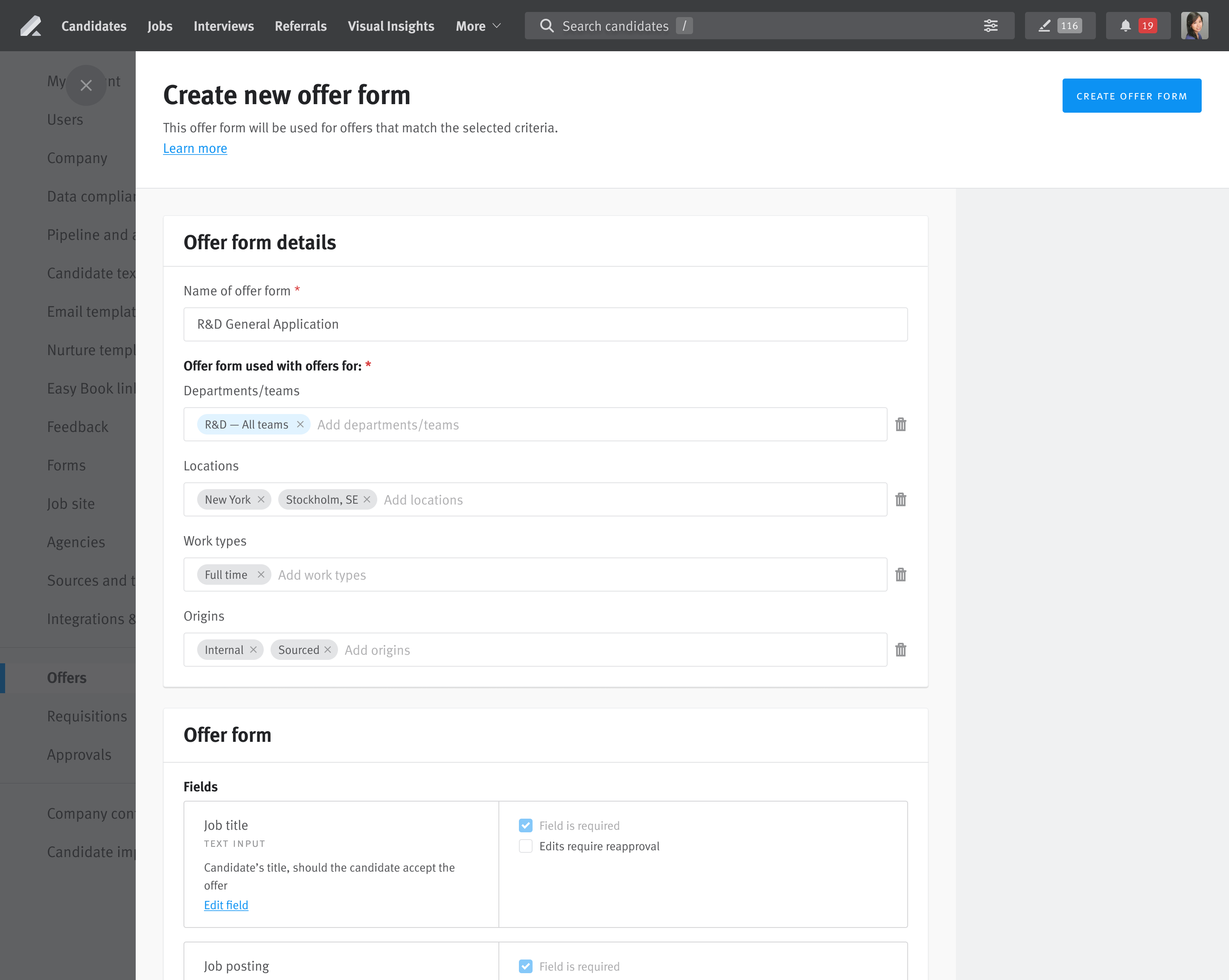
Providing users with the ability to create multiple offer forms based on department/team, location, work type, and profile origin
Company: Lever
Released: 2022
Design Duration: 4 months
Team: Product Manager, Tech Lead and 6 Engineers
Role: Design Lead
Research, Wireframe, Hi-Fidelity Design, Usability Testing, Prototyping, Engineer Handoff and Design QA

In Lever, an offer form contains all the necessary fields for the recruiter to complete in the offer creation process. The offer form would be configured by the system admin on the talent team and they would add fields like the candidate start date or the sign on bonus. Once the offer form is configured, the recruiter would fill out the fields in the offer form to create an offer for the candidates.
Customers are limited to a single offer form for all types of offers. This limitation results in a long and disorganized offer form, creating bottlenecks in the offer process.
Provide customers with the ability to create multiple offer forms in Lever, to streamline the offer process and reduce the time required to send offers out to candidates.
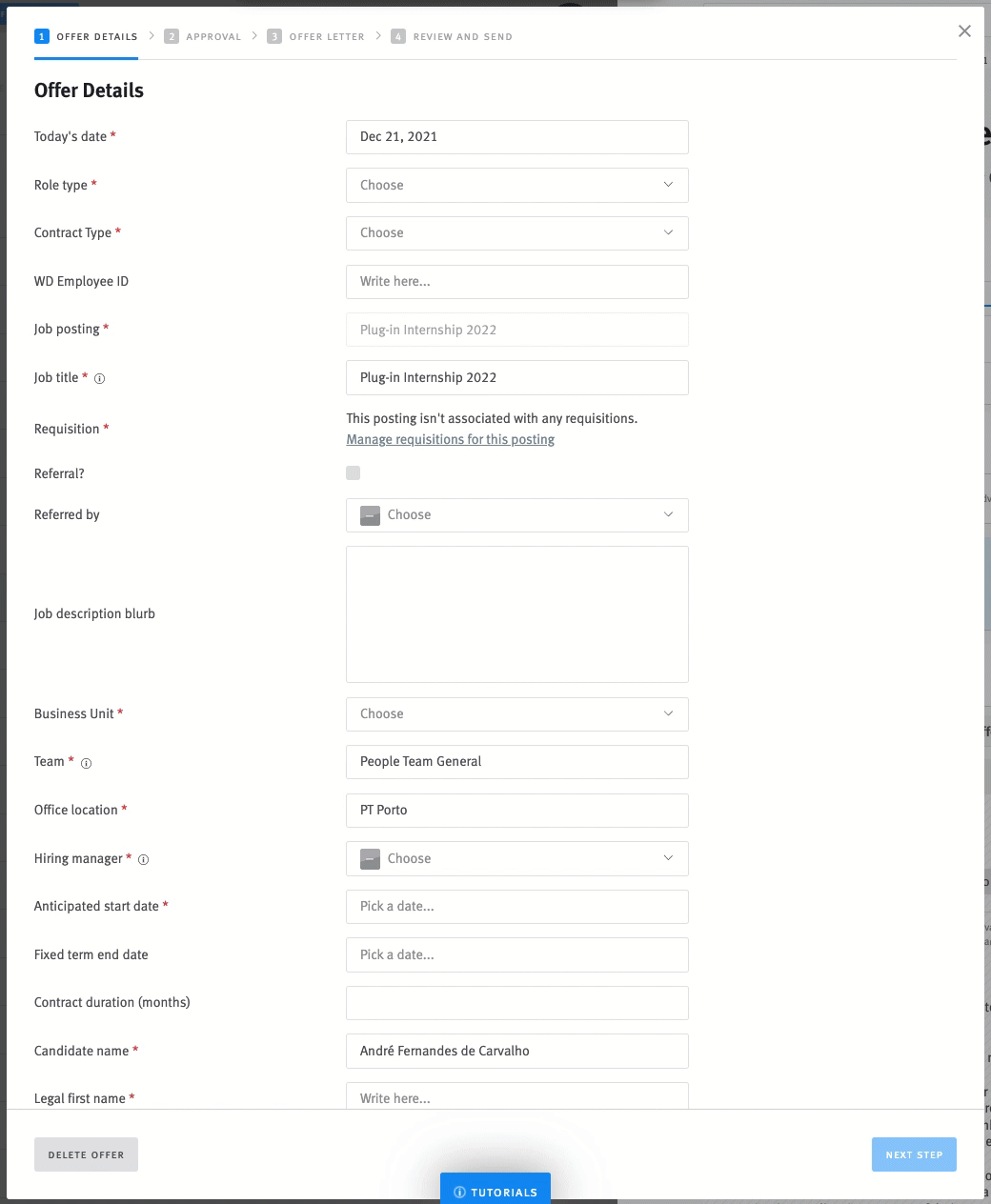
An example of a customer's very long offer form that the recruiter would fill out
To begin the design process, I started the discovery research by leading user interviews with my product manager. For the user interviews, I wanted to understand how customers are currently configuring their offer form and identify the downstream effects the single offer form has to the rest of their offer process. The participants for the interview consisted of 3 internal Lever employees and 6 Lever customers who held the talent ops role, as they typically serve as system admins responsible for configuring the offer form.
User Pain Points:
“Our offer form is way too long, mostly because different locations and teams need to collect different information. This is unwieldy and leads to potential errors (each recruiter needs to know which fields are required for their specific offer, so it's easy to make mistakes).”
— TA Ops, Lever Customer
Downstream effects to the offer creation process:
Downstream effects to the offer approval process:
Working with my product manager, we were able to include a redesign of the template placeholder page into the project scope. Redesigning this page would be beneficial, as it is currently outdated and this page is used to create offer fields that users can add into their offer form.
For the offer forms page, I started with some wireframes to generate the possible functionality and workflow users would take to create a new offer form. During these explorations, I tested out a full page experience to see how users would be able to add the offer form details and configure the offer fields. I also experimented with conditional offer fields to provide users with more flexibility and to prevent the offer form creator from creating different offer forms that have slight nuances.
Throughout the design process, I would meet regularly with my product manager and tech lead to gather design feedback on my design explorations. This collaboration helped the team finalize the functionality needed for the initial release. By meeting regularly with the team, I was also able to design with technical feasibility in mind and could also account for any edge cases or project limitations from the get go. After multiple syncs with my team, I polished up the designs to create a high fidelity solution and prototype.
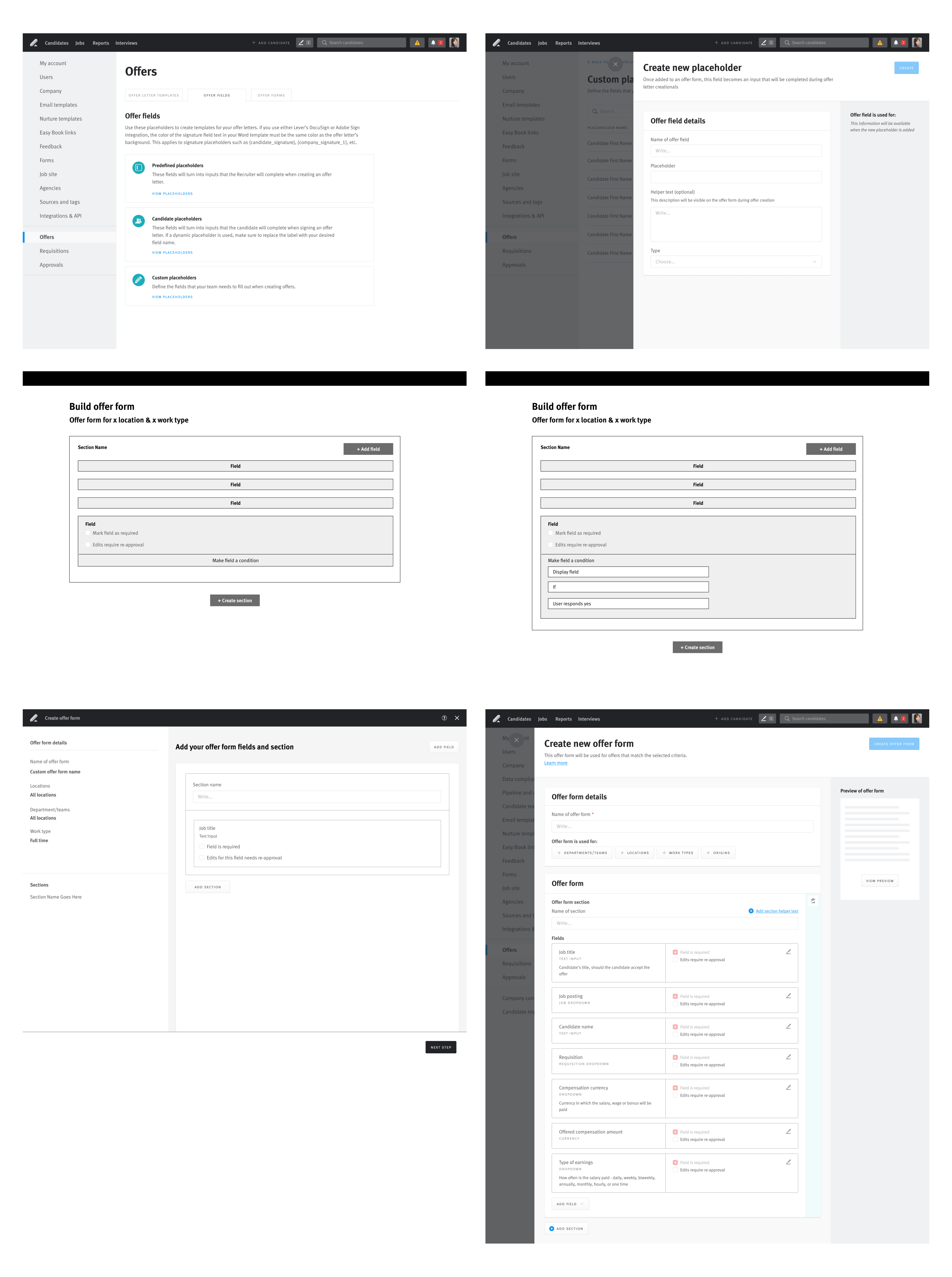
After finalizing the first iteration of the final solution, I led usability testing sessions with the customers we had interviewed in the previous user interviews. These sessions helped us in collecting feedback from customers on the new designs.
Feedback to the new offer field page:
Feedback to the new offer forms page:
Customers will be able to configure offer forms in Lever based on department/team, location, work type, or profile origin.
The “best-match” offer form will automatically be populated for recruiters to fill out upon offer creation.
*The best-match offer form is determined by how the offer form configuration matches up with data from the candidate profile.
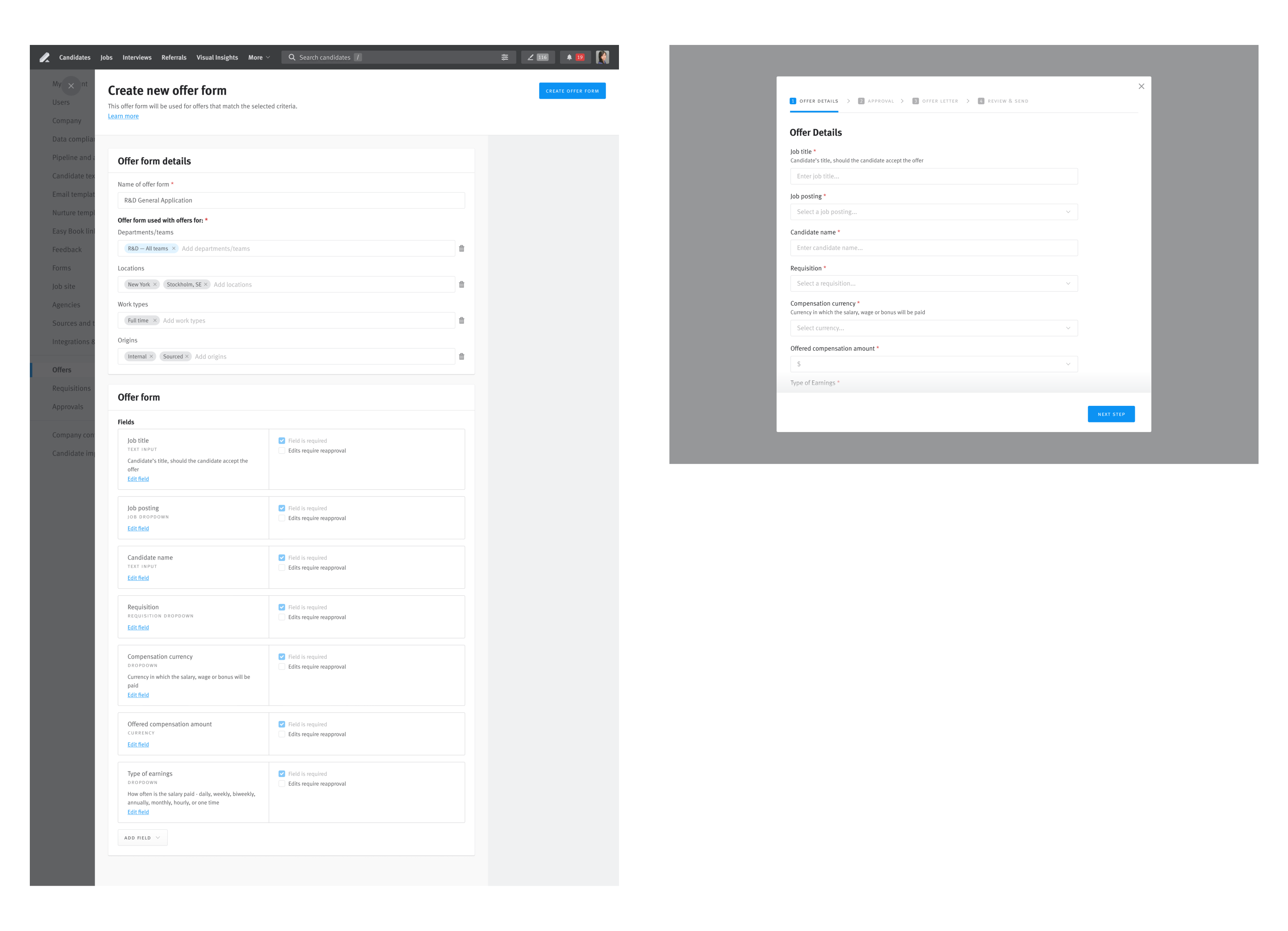
The improved usability and additional functionality on this page will allow for better management of offer fields. From this page, users will be able to create offer fields that can be used in the offer forms.
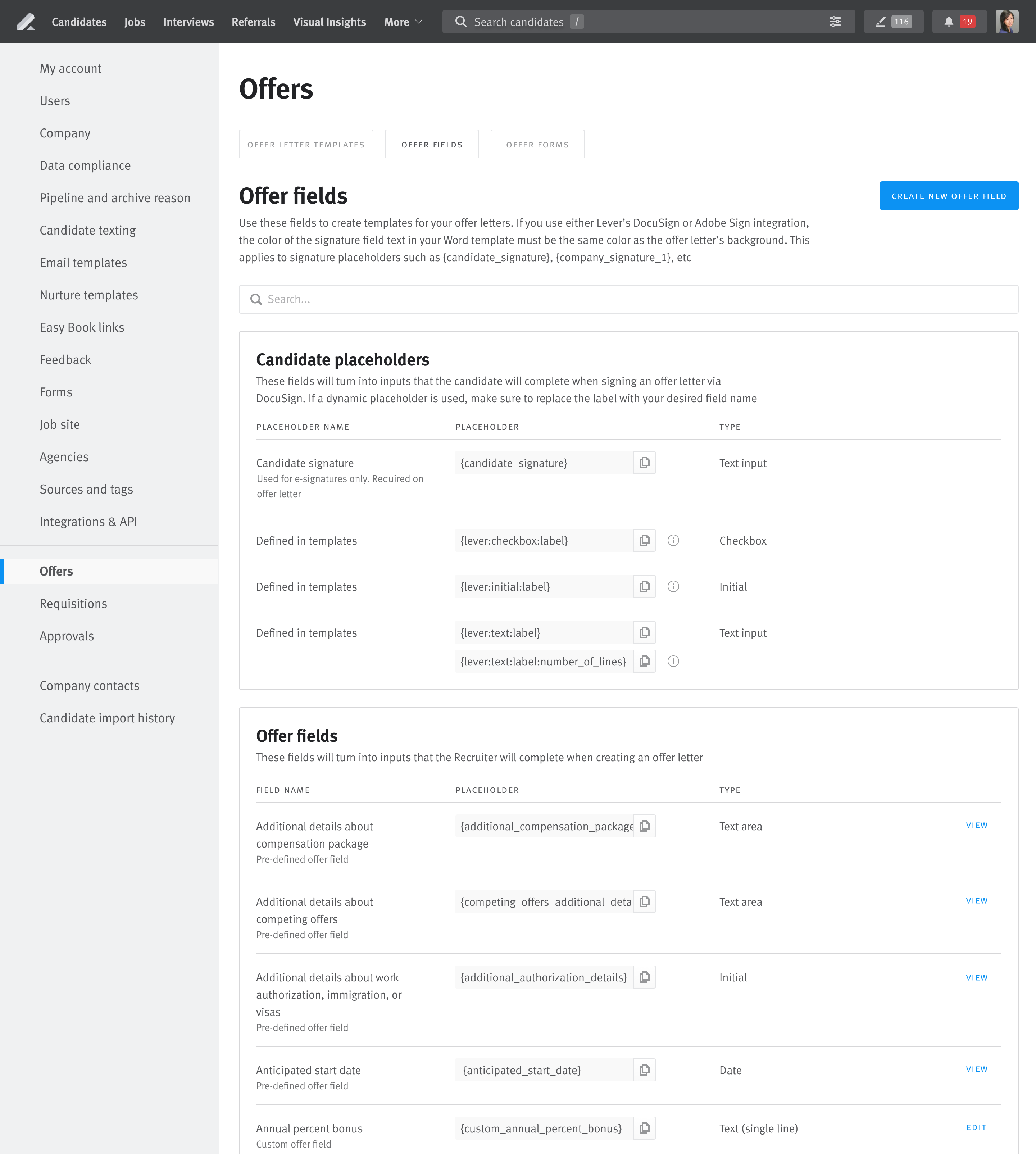
System admins can add helper text to the custom offer fields to provide guidance to recruiters filling out the Offer Form.
Creating and approving offers is more straightforward as only the relevant fields are included on each offer form.
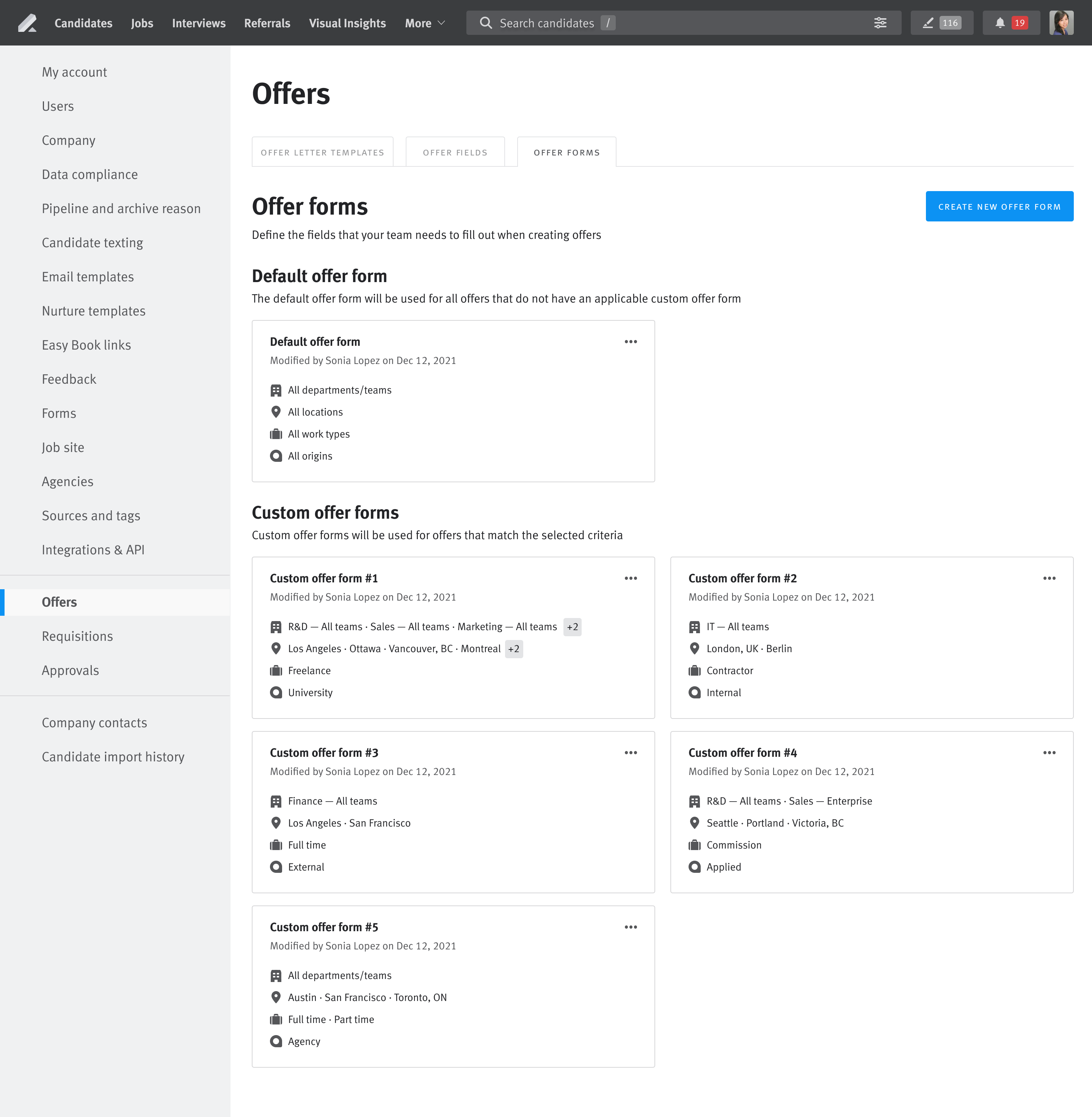
Users can set the criteria for each offer to reduce the number of offer fields needed to be filled during offer creation.
This helps streamline the offer process and prevent users from selecting the incorrect offer form:
With the release of Multiple Offer Forms, it has proven to be a success for Lever's customers. The solution was effective because the "best-match" offer form was automatically populated for recruiters, preventing them from selecting the incorrect offer form and reducing bottlenecks in the offer process.